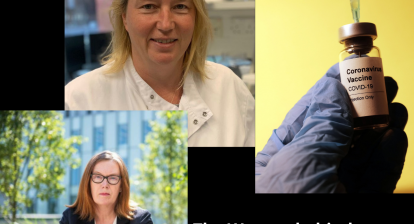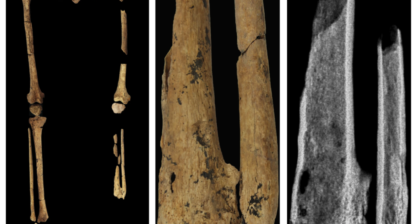Podcast: Play in new window | Download
Subscribe: Apple Podcasts | Spotify | Amazon Music | Blubrry | Email | RSS
Today, we have an absolutely mind-blowing story about an unprecedented feat of brain mapping accomplished by researchers at Harvard and Google. It’s a tale of big data, artificial intelligence, and peering deeper into the brain’s wiring than ever before.
The story begins about a decade ago, when the lab of Dr. Jeff Lichtman, a Harvard professor of molecular and cellular biology, received a tiny sample of human brain tissue – just 1 cubic millimeter in size. But packed into that rice grain-sized piece of temporal cortex from an epilepsy patient was an astronomical amount of data – 57,000 cells, 230 millimeters of blood vessels, and get this…150 million synapses, amounting to a staggering 1,400 terabytes of information.
For years, Lichtman’s team painstakingly imaged the sample using specialized electron microscopy techniques. They then collaborated with AI experts at Google Research to analyze this wealth of data using cutting-edge algorithms. And just recently, they achieved the unthinkable – a comprehensive 3D reconstruction they’ve dubbed “H01”, rendering in vivid detail nearly every cell and neural connection within that minuscule brain fragment. What H01 revealed was astonishing.
For one, non-neuronal glial cells like astrocytes and oligodendrocytes outnumbered neurons by a ratio of 2 to 1, highlighting these long-overlooked supporting actors’ critical importance in brain function.The most common cell type was the oligodendrocyte, whose role is to coat neuronal axons with insulating myelin. And while most neurons formed a multitude of weaker synaptic connections, the team discovered rare “supercharged” pathways where axons formed up to an incredible 50 synapses with another cell.
Even stranger, a few axons took on bizarre, swirling patterns of unknown significance. Since the sample came from an epilepsy patient, it’s unclear if these odd shapes are linked to the condition or just rare quirks of wiring.
But the implications of H01 are monumental. This tour-de-force collaboration between Harvard and Google has pioneered new frontiers in “connectomics” – comprehensively mapping the brain’s neural circuits, just as genomics catalogs our genes.
The feat, published in Science, is the latest in a nearly 10-year collaboration with scientists at Google Research, who combine Lichtman’s electron microscopy imaging with AI algorithms to color-code and reconstruct the extremely complex wiring of mammal brains. The paper’s three co-first authors are former Harvard postdoctoral researcher Alexander Shapson-Coe; Michał Januszewski of Google Research, and Harvard postdoctoral researcher Daniel Berger.
Dr. Lichtman explains the significance saying: “There is this level of understanding about brains that presently doesn’t exist. We know about the outward manifestations of behavior. We know about some of the molecules that are perturbed. But in between the wiring diagrams, until now, there was no way to see them. Now, there is a way.”
The team’s ultimate goal, funded by the National Institutes of Health BRAIN Initiative, is to scale up and map an entire mouse brain – a mind-boggling 1,000 times more data than the 1 cubic millimeter H01 sample. Next, they’ll tackle the mouse hippocampus, that crucial region for memory and neurological disease.
With tools like these, Lichtman envisions mapping animal models of autism, Alzheimer’s and more – at last shedding light on the brain’s wiring underlying cognitive function and dysfunction.The H01 data, published in the journal Science, has been made freely available on a dedicated website, allowing scientists worldwide to pore over and annotate this first ultra high-resolution glimpse into the brain’s breathtakingly complex architecture.
Google Research collaborator Viren Jain emphasizes the importance of open science:
“Given the enormous investment put into this project, it was important to present the results in a way that anybody else can now go and benefit from them.”
Please subscribe to the You Tube Channel for more on science, history and nature and please do check out the website and follow on social media: Twitter // Instagram // Facebook // Reddit // Threads. Music: Moonrise by Chad Crouch – Instrumental from Free Music Archive.







